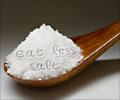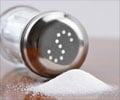A team of scientists has unearthed the healing properties of gold, by discovering how gold salts relieve pain of rheumatoid arthritis and other inflammatory diseases.
A team of scientists has unearthed the healing properties of gold, by discovering how gold salts relieve pain of rheumatoid arthritis and other inflammatory diseases. According to scientists at Duke University Medical Center, their findings may renew the lost interest in gold salts as a treatment for arthritis and other inflammatory diseases.
The research team used injections of gold salts in the early 1900s to ease the pain and swelling associated with arthritis. However, the treatment came at a high cost, with side effects such as rashes, mouth sores, kidney damage and occasionally, problems with the bone marrow’s ability to make new blood cells.Recently, new treatments like methotrexate and biologically engineered drugs have replaced gold as a preferred treatment, and gold salts, while remaining effective, are usually administered as a last resort.
But Dr. David Pisetsky, chief of the division of rheumatology and immunology in the department of medicine at Duke, says “we shouldn’t dismiss gold salts so quickly. We scientists have really never understood why gold works. Now that we have a better handle on its action, we may be able to use that mechanism to create new and better gold-like drugs to treat arthritis.”
Pisetsky and collegues found that a particular molecule, HMBG1, which provokes inflammation, the process underlying the development of rheumatoid arthritis, is a key player in transcription, the process that converts genetic information in DNA to its RNA equivalent. The researchers say that when HMGB1 is released from the cell – either through normal processes or cell death – it becomes a stimulus to the immune system and enhances inflammation.
“Interestingly, HMGB1 is not produced evenly throughout the body. There is an unusually high amount of it in the synovial tissue and fluid around the joints – where arthritis occurs,” Pisetsky said. Pisetsky, working with colleagues at the University of Pittsburgh and the Karolinska Institute in Sweden, stimulated mouse and human immune system cells to secrete HMGB1, then treated them with gold salts.
They found that the gold blocked the release of HMGB1 from the nucleus. That, in turn, should lessen the amount available to provoke the body’s immune system, weakening the inflammatory response. “Basically, keeping HMGB1 corralled inside the nucleus is a good thing, when it comes to arthritis,” he said. He added that gold inhibits the release of HMGB1 by interfering with the activity of two helper molecules that ease HMGB1’s release from the cell, interferon beta and nitric oxide.
Advertisement
Source-ANI
LIN/C










